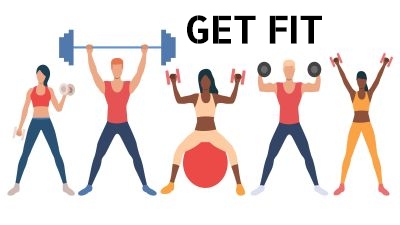The magic of numbers
Why do we celebrate National Mathematics Day? Whom do we honour on that day? Read on to find out…

Why do we celebrate National Mathematics Day? Whom do we honour on that day? Read on to find out…

Your journey to fitness excellence starts here. Watch this video for how to go about it.

What is COP28? When did it take place? Why does it matter? Find out now.
Dominating the Parisian skyline is the majestic Eiffel Tower. More than a century later, it continues to be a sight to behold.
Towering over the Paris skyline with its iconic lattice structure is the Eiffel Tower. When completed, it was the tallest building in the world at that time. Today, the Eiffel Tower attracts millions of tourists. In 1991, the UNESCO inscribed it on its World Heritage Site list.
To celebrate the centennial of the French Revolution in 1889, a world fair was proposed. The French authorities wanted to unveil a centrepiece at the fair. The initial design was created by Maurice Koechlin and Emile Nouguier, engineers who worked for the Compagnie des Establishments Eiffel and refined by Stephen Sauvestre, the head of the company’s architectural department. Later, Gustave Eiffel, who owned the company, bought the patent.
Construction of the tower began on January 2, 1887, and was completed in March 1889. On March 31, Eiffel escorted a group of government officials and members of the press to the top of the tower. The ascent took over an hour, as the lifts had not yet been installed. Once they reached the top, a flag was hoisted and a 25-gun salute was fired at the first level.
One of the things that Eiffel was very particular about was painting the tower with a thick layer of protective paint every seven years to guard against the corrosive effect of the weather. The French government has followed this strictly; one of the reasons why the Eiffel Tower has been so well maintained. Originally reddish-brown, the tower had been painted in different colours. In 1968, a special shade called “Eiffel Tower Brown was adopted and continues to be in use. In 2024, the tower will be painted golden to commemorate the 2024 Summer Olympics to be held in Paris.
Which colour goes where? Try this colour-based Sudoku and fill up the grid.
In the world of colours, primary colours are like the building blocks from which all other colours are derived. They cannot be recreated by mixing any other colours. The primary colours are red, yellow and blue.
We get secondary colours when we mix primary colours with each other. Red and yellow make orange, red and blue make purple, and blue and yellow make green. These are the secondary colours.
Here is a Sudoku with a twist. Instead of numbers, you need to use the three primary and three secondary colours. Can you place them in such a way that each colour appears only once in every row, column and 2*3 grid?
How much do you know about the world around you? Find out with this quiz.
Time to get your grey cells going with this set of six questions.
Did you follow the blistering racing action this year? Then, this task must be a walk in the park.
It’s curtains on the 2023 Formula One racing season! With 22 enthralling races in circuits around the world, the season began in March and ended in November.
This season stood out because a single driver, who won the title of World Drivers’ Champion, won 19 out of 22 Grands Prix and finished on the podium 21 times. His team became the World Constructors’ Champion, winning 21 out of 22 races this year.
Fun task for you. Can you arrange the top 5 drivers and top 5 constructors in the order in which they finished this season? Go from 1 to 5.
Drivers
Constructors
Hunt and seek as you challenge your observation skills. Can you find the hidden objects?
There are 12 hidden objects. Can you find them all?
Picture Courtesy: Getty Images/iStockPhoto
An interactive task to get you matching international organisations with their headquarters. Can you ace it?
There are many international organisations in the world, performing various functions. An international organisation is one that involves members from more than one country.
An example is the United Nations (UN) which is the largest international organisation in the world. Its purposes include maintaining international peace and security, developing friendly relations among nations, and achieving international cooperation.
Another example is the World Health Organisation (WHO) which promotes global health and safety. The World Wide Fund for Nature (WWF) works in the field of wilderness preservation.
Other organisations include the International Olympic Committee (IOC), which is responsible for organising the modern Olympic Games, and the World Bank, which is a financial institution that works towards reducing poverty.
Now that you know about these organisations, can you try and match them with the cities where their headquarters are located?
In 2023, there were three major disasters in the Himalayas. The mountains have a message. Are we listening?
In January this year came reports of Joshimath, an important and ancient pilgrimage town in Uttarakhand, sinking. In October, heavy rains caused a glacial lake outburst flood (GLOF) at Sikkim’s South Lhonak Lake that reached the Teesta III Dam at Chungthang at midnight and destroyed it in minutes. Water levels downstream rose by 15 to 20 feet, flooding areas in Sikkim, West Bengal and Bangladesh. Then, in November, a section of the Silkyara tunnel, in Uttarkashi District, Uttarakhand, caved in trapping 41 workers. This list leaves out many other events that have occurred with frightening frequency though the year. What exactly is happening in the Himalayas?